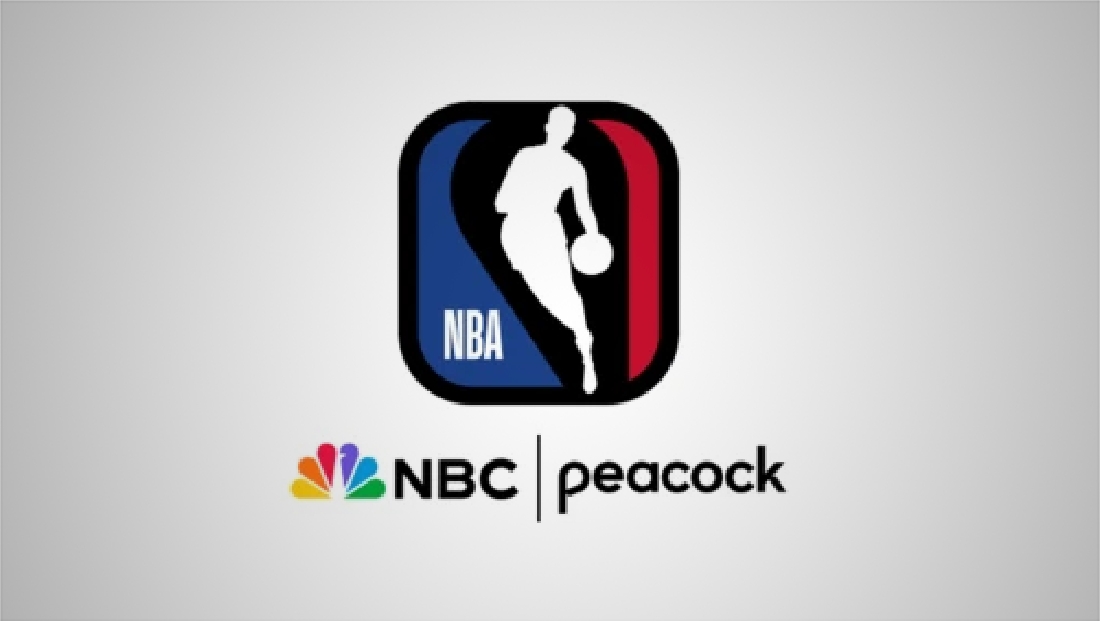Subscribe to NCS for the latest news, project case studies and product announcements in broadcast technology, creative design and engineering delivered to your inbox.
Twenty-three years after NBA broadcasts disappeared from NBC, the network is bringing back one of sports television’s most recognizable voices, except Jim Fagan won’t actually be in the booth.
The longtime NBC Sports announcer’s voice will return through AI technology, joining John Tesh’s iconic “Roundball Rock” theme music as the network balances broadcast nostalgia with modern production innovations for its NBA return Tuesday night.
The resurrection of these classic elements through contemporary technology exemplifies NBC Sports’ approach to reclaiming its NBA presence.
While AI recreates Fagan’s distinctive delivery and the laser peacock logo returns to screens, the network is simultaneously repositioning how basketball is broadcast, moving analysts from traditional booths to courtside positions next to team benches.
“We’re obviously going to lean into the past, but we’re going to build forward and grow the game and grow with the game,” executive producer Sam Flood explained during a media conference call ahead of the season.
The challenge involves satisfying viewers who remember the original broadcasts while meeting dramatically different technical expectations.
The shift in viewer expectations since 2002 has forced NBC to reimagine fundamental broadcast elements. During the network’s previous NBA era, scoreboards appeared only after scoring plays. Today’s audiences expect persistent graphics, real-time statistics and constant score displays.
“If we went all the way back and did our old-school telecast, you wouldn’t see the scoreboard in full-time,” Flood noted. “The scoreboard would come in after every score on the old ‘NBA on NBC.’ There was no permanent clock. It’s a different expectation from an audience.”
Advertisement
Graphics team leaders Tripp Dixon and Chad Hudson have developed the broadcast package that incorporate nostalgic elements – including the animated peacock and classic color schemes – within contemporary frameworks. The AI-generated Fagan voiceovers will provide continuity between segments, recreating the announcer’s cadence and tone while delivering modern promotional content.
“They’ll feel that familiar beat and that familiar look that made the ‘NBA on NBC’ so special,” Flood said.
Redefining the viewing angle
While technology enables NBC to recreate past elements, the network’s biggest shift involves eliminating the traditional broadcast booth for Monday night Peacock exclusives. Instead of positioning analysts high above the court, NBC will place them at floor level alongside team benches.
Analysts will attend morning shootarounds with their assigned teams, gathering insights that inform their commentary. During games, they’ll sit as close as possible to their respective benches, providing team-specific viewpoints throughout the broadcast.
“They’ll be sitting as close as possible to the bench of their respective teams, and they will break down the game as if they’re calling it from that lens,” Flood explained.
This approach evolved from NBC’s NHL coverage, where analysts worked between team benches while play-by-play announcers remained in elevated positions. Noah Eagle, who will handle many Monday broadcasts, tested the basketball configuration with Austin Rivers and Robbie Hummel, confirming analysts could maintain visual contact across the court without communication problems.
Platform complexity and distribution
The production innovations coincide with distribution challenges across NBC’s broadcast network and Peacock streaming service.
Monday games will stream exclusively on Peacock, featuring the experimental bench-side coverage. Tuesday doubleheaders add complexity through regional broadcasting – East Coast NBC affiliates will receive one game while West Coast stations get another, though Peacock will carry both nationally.
Mike Tirico acknowledged the scheduling intricacies of balancing NBA coverage with NFL broadcasts and Winter Olympics preparation. He’ll handle early Tuesday broadcasts before other commitments affect availability, with Eagle, Terry Gannon and Michael Grady rotating through additional assignments.
“Our job is to improve every night,” Flood said, comparing the production philosophy to athletic training. “If you’re not getting better, you’re getting worse.”
Tuesday’s season opener carries particular weight as both a technical showcase and symbolic moment.
The Oklahoma City Thunder’s championship banner ceremony against the Houston Rockets represents the first NBA game on NBC since 2002 and Peacock’s first NBA broadcast. The Los Angeles Lakers hosting the Golden State Warriors follows in the doubleheader.
Advertisement
For NBC Sports, the challenge extends beyond nostalgia or innovation alone.
The network must satisfy longtime viewers who associate NBA basketball with Tesh’s synthesizer riffs and NBC’s presentation style while attracting younger audiences accustomed to streaming platforms and second-screen experiences.
“The cadence of promotion and the ability to tell the story of this league is going to be front and center for everything we do across all the platforms at NBC,” Flood said.
Subscribe to NCS for the latest news, project case studies and product announcements in broadcast technology, creative design and engineering delivered to your inbox.


